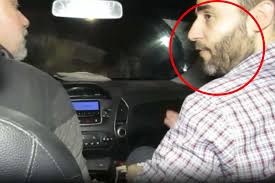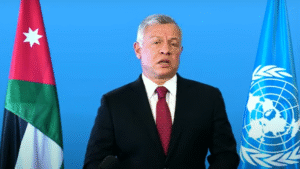The recent assassination in Damascus on March 26 of General Hassan Mahdavi, commander of the Quds Force in Syria and Lebanon, on behalf of the Iranian Revolutionary Guards, raises questions about the impact on arms smuggling reaching Judea and Samaria.
Mahdavi was responsible for overseeing weapons transfers from Iran to Syria, Iraq, Lebanon, and Judea and Samaria.
The attack in Damascus also resulted in the deaths of seven Iranian officers, including members of “Unit 4000” of the Revolutionary Guards and “Unit 18840” of the Quds Force, involved in smuggling weapons to Israel and northern Samaria.
This event highlights the clandestine conflict between Israel and Iran over the smuggling of Iranian weapons into Judea and Samaria.
Iranian weapons are smuggled into Israel and northern Samaria through two main routes:
- From Iran to Syria or Iraq, then through northern Jordan and the Jordan Valley to the Samaria region.
B. From Syria to Lebanon and then across the border into Israel and northern Samaria.
Some of these weapons end up in the hands of criminal factions within the Arab sector of Israel.
The Iranian smuggling networks involve operatives from the Quds Force, Hezbollah, criminal gangs, and Bedouin smugglers in northern Jordan.
Despite efforts by the Jordanian army to combat smugglers, including those trafficking the drug Captagon, smuggling operations persist.
In response to Mahdavi’s assassination, senior security officials anticipate an increase in weapon smuggling into northern Samaria to provoke attacks by armed terrorist groups seeking retribution.
Previously, Iran smuggled light weapons such as rifles, pistols, and explosive charges. However, there are concerns that they may now attempt to smuggle anti-tank and anti-aircraft missiles, such as the “Strela” missile, to target planes departing from Ben Gurion Airport.
In a strategic decision made in the summer of 2021, Iran committed to flooding Judea and Samaria with large quantities of weapons via multiple routes, primarily targeting terrorist infrastructures of Hamas and Islamic Jihad in Jenin, Nablus, and Tulkarm.
After arming Hamas and Islamic Jihad in the Gaza Strip, Iran turned its attention to supporting terrorist groups in northern Samaria.
Funds were allocated to Islamic Jihad, leading to the establishment of new armed groups known as “battalions,” comprising members from various organizations including Fatah, Hamas, and the Popular Front.
The “Jenin Battalion” was the first such group established in Jenin, followed by the “Nablus Battalion” in Nablus.
Sheikh Bassam al-Saadi from Jenin, a senior member of the Islamic Jihad organization, played a significant role in laying the groundwork for these new terrorist groups.
In August 2021, General Hossein Salami, commander of the Iranian Revolutionary Guards, hosted Ziyad Al-Nakhla, Secretary General of Islamic Jihad, to discuss strengthening the organization’s activities in northern Samaria.
Salami declared Iran’s intention to arm “resistance” forces in the West Bank, expanding the campaign against Israel beyond the Gaza Strip.
Salami ridiculed Israel’s inability to halt weapons flow into the West Bank, asserting that the struggle against Israel had shifted from Gaza to the West Bank.
With the ongoing conflict in the Gaza Strip altering Iran’s priorities, Israeli security assessments anticipate increased focus on Judea and Samaria, posing a significant challenge to the IDF and Shin Bet.
In response, Israel has intensified security measures along the Jordanian border to counter arms smuggling.
Prime Minister Netanyahu previously announced plans to construct a new fence along the Jordanian border, similar to the one on the Egyptian border, to prevent infiltrations and arms smuggling.
The time has come to initiate these measures in earnest to address the growing threat posed by weapon smuggling into Judea and Samaria.




